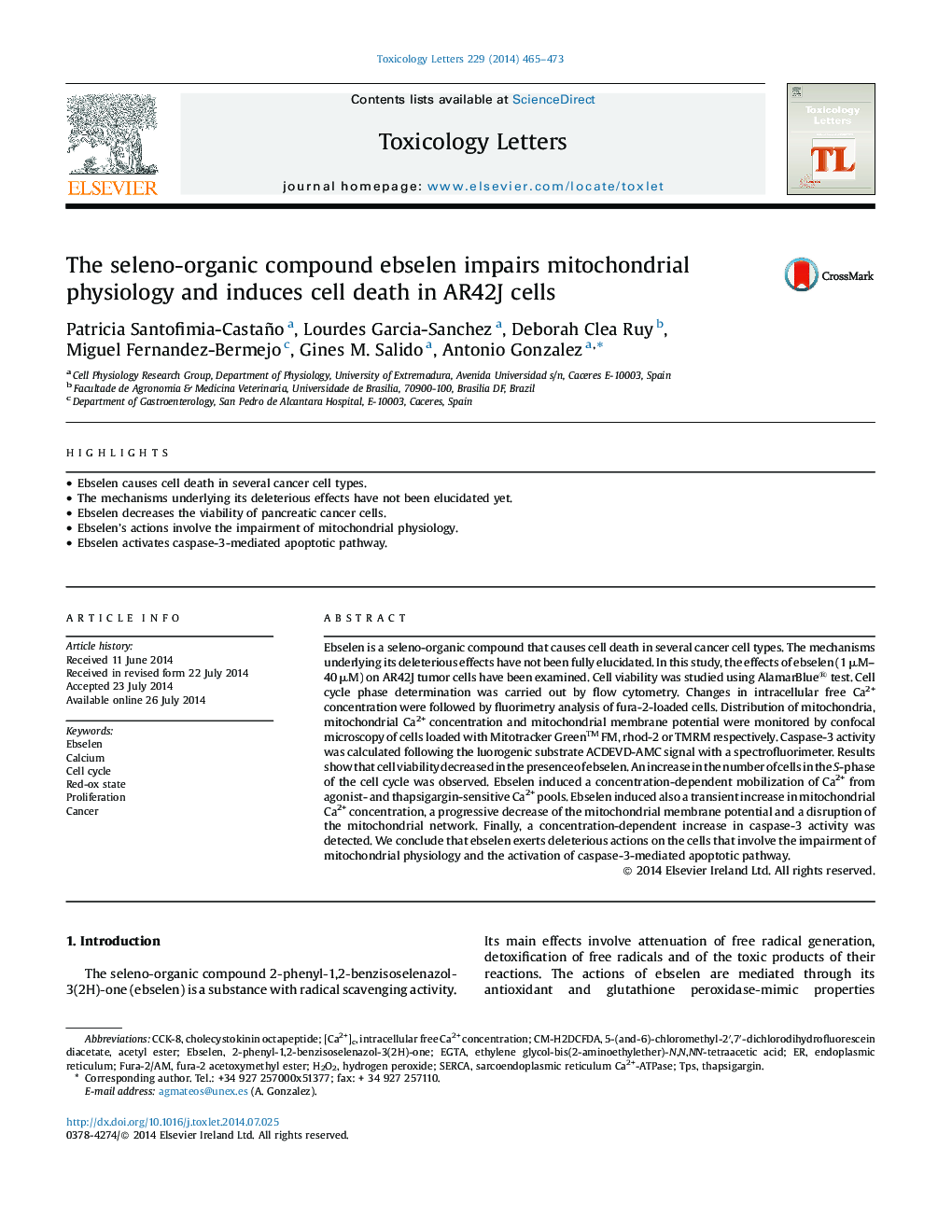| Article ID | Journal | Published Year | Pages | File Type |
|---|---|---|---|---|
| 5860132 | Toxicology Letters | 2014 | 9 Pages |
Abstract
Ebselen is a seleno-organic compound that causes cell death in several cancer cell types. The mechanisms underlying its deleterious effects have not been fully elucidated. In this study, the effects of ebselen (1 μM-40 μM) on AR42J tumor cells have been examined. Cell viability was studied using AlamarBlue® test. Cell cycle phase determination was carried out by flow cytometry. Changes in intracellular free Ca2+ concentration were followed by fluorimetry analysis of fura-2-loaded cells. Distribution of mitochondria, mitochondrial Ca2+ concentration and mitochondrial membrane potential were monitored by confocal microscopy of cells loaded with Mitotracker Green⢠FM, rhod-2 or TMRM respectively. Caspase-3 activity was calculated following the luorogenic substrate ACDEVD-AMC signal with a spectrofluorimeter. Results show that cell viability decreased in the presence of ebselen. An increase in the number of cells in the S-phase of the cell cycle was observed. Ebselen induced a concentration-dependent mobilization of Ca2+ from agonist- and thapsigargin-sensitive Ca2+ pools. Ebselen induced also a transient increase in mitochondrial Ca2+ concentration, a progressive decrease of the mitochondrial membrane potential and a disruption of the mitochondrial network. Finally, a concentration-dependent increase in caspase-3 activity was detected. We conclude that ebselen exerts deleterious actions on the cells that involve the impairment of mitochondrial physiology and the activation of caspase-3-mediated apoptotic pathway.
Keywords
CCK-82-phenyl-1,2-benzisoselenazol-3(2H)-onesarcoendoplasmic reticulum Ca2+-ATPaseCM-H2DCFDAThapsigarginEbselenTPsEGTAFURA-2/AM5-(and-6)-chloromethyl-2′,7′-dichlorodihydrofluorescein diacetate, acetyl estercholecystokinin octapeptide[Ca2+]cHydrogen peroxideFura-2 acetoxymethyl esterProliferationCancerendoplasmic reticulumintracellular free Ca2+ concentrationSERCAH2O2Cell cycleCalcium
Related Topics
Life Sciences
Environmental Science
Health, Toxicology and Mutagenesis
Authors
Patricia Santofimia-Castaño, Lourdes Garcia-Sanchez, Deborah Clea Ruy, Miguel Fernandez-Bermejo, Gines M. Salido, Antonio Gonzalez,
